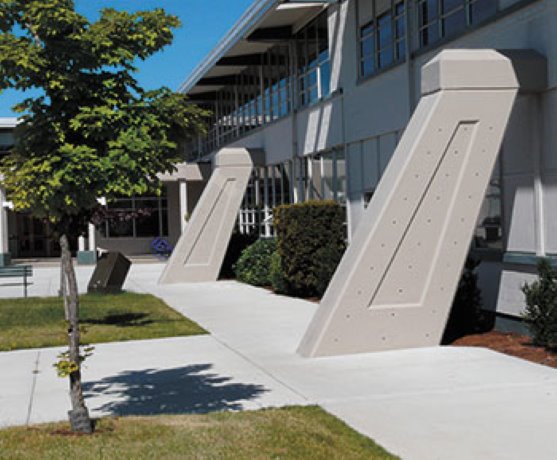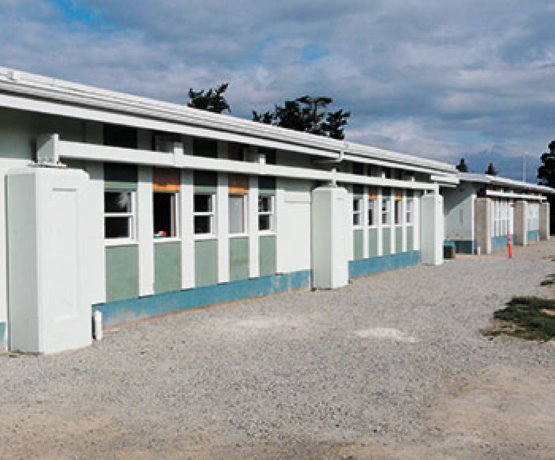The British Columbia Ministry of Education (MOE) is carrying out a billion-dollar-plus program to mitigate the seismic risks faced by the province’s school buildings in the event of an earthquake.
The core of the Seismic Mitigation Program (SMP) is an innovative set of guidelines for structural engineers that was developed jointly by the MOE, the Association of Professional Engineers and Geoscientists of British Columbia (APEGBC) and the University of B.C.’s Earthquake Engineering Research Facility (EERF).
“The Seismic Retrofit Guidelines for B.C. Schools (SRG) that we developed are based on the latest and best peer-reviewed research on seismic assessment and retrofit,” said Carlos Ventura, director of EERF.
“The guidelines are unique in the seismic world. Very few others, if any, have gone as far as we have.”
Others agree.
“What makes the SRG noteworthy is that it takes the best and most up-to-date methods of estimating earthquake damage and puts them in a form which the average structural engineer, who is no expert on seismic engineering, can understand and use,” said Graham Taylor, manager of the UBC Research team.
Launched in 2004, the objective of the SMP is to achieve a life-safety standard for B.C. schools by minimizing the probability of local structural collapse as a result of a seismic event.
“The risk of an earthquake here is very significant,” said Taylor.
“We’re guaranteed to have one. We just don’t know when. The last big one in the region was in 1700 and they take place every 300 to 500 years.”
Taylor said the most vulnerable part of B.C. is the southwest corner of the province: Southern Vancouver Island and the Lower Mainland, where there is the risk of a moderate to large earthquake.
“Most of the seismic activity here has been off the coast, so we don’t feel it,” said Taylor.
“That’s a problem because we don’t get enough reminders that we’re in danger.”
Taylor said the most at-risk schools were built between 1912 and 1920, which is when many of the schools in Vancouver and Victoria were originally constructed.
“Schools built since the 1970s are at much lower risk,” he said.
To reach the SMP’s objective, the ministry wanted a common engineering approach that used innovative methods for assessing and then retrofitting existing schools.
The MOE contracted APEGBC to prepare the guidelines, and the association subcontracted the development of the technology behind the guidelines to EERF.
The fruits of their joint labour is the SRG, a nine-volume, 300-page manual, and a companion web-based Seismic Performance Analyzer.
The guidelines comprise assessment tools and procedures for engineers to determine how different sections of school buildings in different parts of B.C.’s seismic zones will withstand different types of earthquakes.
They also contain technical standards for engineers to follow when planning school retrofits, and a data analyzer that gives engineers access to more than eight million sets of peer-reviewed seismic retrofit analysis.
The seismic retrofit guidelines have been reviewed by earthquake experts in California and at the Federal Emergency Management Agency (FEMA) in the United States.
The guidelines have helped shape FEMA’s own regional guidelines and policies.
In 2010, they won the Canadian Society of Engineers Excellence in Innovation in Civil Engineering Award.
Taylor said the program has faced a number of challenges since it started.
“In the early years of the program, some of the engineers were a little aloof,” he said.
“It took them a while to get comfortable with it, but over time all of them have come onside with it.”
Another challenge was financial.
“We didn’t know how much the program would end up costing to fix all the schools that needed fixing, but we kept on and hoped the costs would be manageable,” Taylor said.
“Fortunately, the ministry has been very supportive of the program.”
The program also encountered technical challenges.
“There was no guarantee that we’d actually make it to the finish line,” he said.
“We were fortunate to have a core group of 15 to 20 people, who worked well together on the project.”
Philip Chambers, MOE manager responsible for the seismic upgrade program, said a total of 318 schools are in the program.
Of that number, 133 schools have been completed, 14 are under construction, seven are proceeding to construction and 60 have been financially supported to proceed to construction.
Financial support for 104 schools is still pending, although the province has set aside about $1 billion over the next 10 years.




Recent Comments
comments for this post are closed